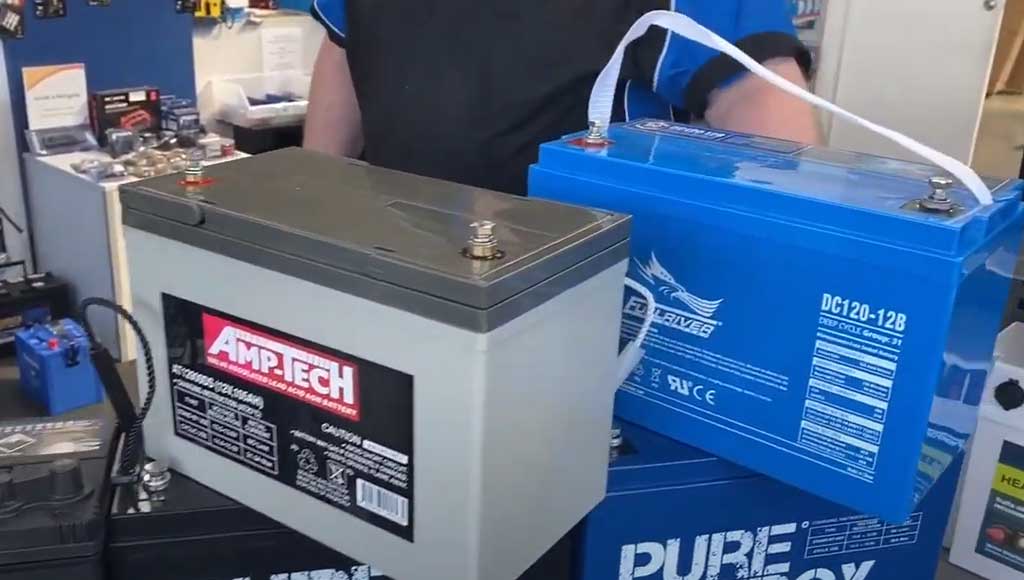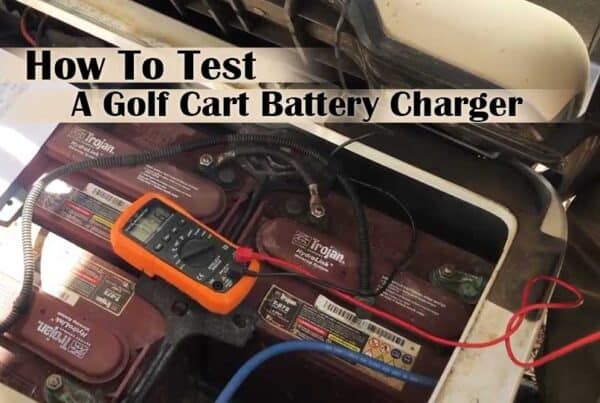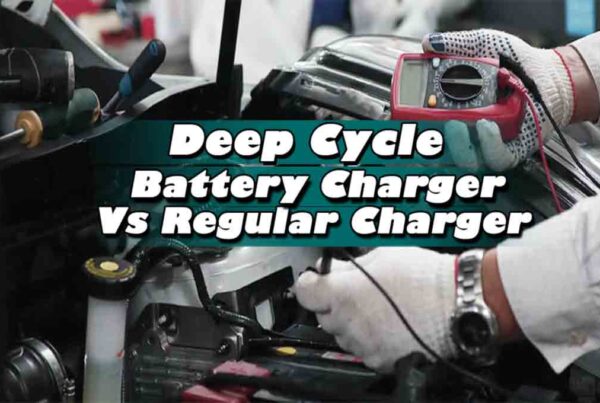Are you facing problems with bad batteries? Can’t understand if the battery is good or bad? Won’t your deep cycle battery hold the necessary amount of charge? Well! Look no further. We will hear you. We come with the solutions. So let’s clear your misconception.
Always remember the battery is not a bottle of water that you’ll use half now and the other half later. A battery can’t always maintain the proper balance as it’s not a tank of electricity. With this trouble, we’re here to discuss the most 3 easy steps on how to tell if a deep cycle battery is bad.
 How to test your battery?
How to test your battery?
Being a motorcycle techie, we often get calls from various customers facing problems with bad batteries. And so, we’ve shortlisted 3 easy ways to get your problem solved at home. In general, the problems occur due to chemical issues. Let’s know how to tell if deep cycle marine battery is bad–
1) Examine the Battery
It’s the very first way to tell if your battery is bad. Simply check out the battery. Have a good look and inspect some things-
- Crack or rupture of the plastic
- Broken terminal
- Excessive leaking
- Swell or bump in the case
- Discoloration
If you inspect these things, your motorcycle battery is somewhat in bad condition. This damaged terminal is risky as it results in a short circuit. If so, you’ll observe some hint of burning or melting. During a short circuit, all the power of electricity is unloaded shortly. Thus it generates a lot of heat and often breaks out the battery.
Swell or bump in the case causes due to overcharging the battery. Mishandling results because of physical opening in the case. In general, with small cracks, holes, and splits, a battery still works. But if you’re concerned about your safety, make sure your battery is stable to use.
If you own wet-cell batteries, it’s important to maintain the water level. If flooded batteries become low, you can refill them with distilled water instantly. But long-term dryness can cause a great problem.
Sulfation is caused due to the exposure of oxygen to the cell plate. You know what? When will you know your battery is bad? Sulfation is the very first sign of early battery failure, that we should keep in concern.
Never charge a dry battery. It causes burning. When you notice your battery has sufficient fluid, but the color turns brownish or dark, it’s the 2nd indication of your battery failure.
If one cell becomes damaged, the entire battery stops working. It is high time you replaced your battery.
2) Take a Voltage Reading
You can easily infer the state of charge by observing the voltage of the battery. Here I’m going to discuss a short table of the breakdown according to the state of charge and voltage-
State of Charge Voltage
100% 12.7 – 13.2
75% 12.4
50% 12.2
25% 12.0
Discharged 0 – 11.9
If your battery-
● Has voltage 0, there is a possibility of a short circuit
● Has a dead cell if it can’t attain higher than 10.5 voltage during charging.
● Is sulfated when it is fully charged, but the voltage is 12.4 or less.
If the battery discharges, natural byproduct sulfation occurs. What’s the solution? Recharge the battery. Recharging turns the battery back to the electrolytes by reversing sulfation crystals. Then the battery can again be ready to supply power. If you get your battery uncharged for a long time, the sulfation rises badly and sets on the cell plates. Increased sulfation encloses the plate surface; thus it can’t produce power. Eliminate the chemicals again, producing power.
A sulfated battery can’t be fully charged. Charging a sulfated battery is good for nothing, because it will hold at all. Only charging can’t get the battery in a healthy condition. For this, you have to replace your battery as soon as possible.
3) Load Test of The Battery
For load testing, you can go to your local automotive shop, there you will find necessary equipment for checking. But you can test your own at home only with a digital voltmeter. Keep in mind- the battery has to be fully charged before load testing; only after full charge, you can check it. Let’s talk about how can you test the load of your battery at home-
First, uncover the battery from the seat. Then, look at the battery terminals. Never detach it as you’re going to start the bike.
Then keep the prongs of the digital voltmeter to the correct terminal of the battery.
After that, observe the voltage by pushing the start button. Then, inspect the voltage reading properly.
If you notice that your battery voltage is being dropped to 0, it is a significant problem. In general, it is called an open-cell. Indeed, a decent 12-volt motor battery can uphold 9.5 to 10.5 volts for a 30s load. Unfortunately, the voltage can also drop out due to sulfate crystal buildup. Because of the intense heat of the load, weld pieces that connect the cells become loose and separated.
Consequently, it cut out the power, and the voltage drops. It would be best if you immediately cooled off the battery. It can give you an initial connection. Open-cell batteries can’t produce proper power for connection. It often shows false voltage reading. Load test helps in that fact. Look no further. It’s time to replace your battery if your battery voltage keeps dropping.
I think now you’re clear that how to tell if a deep cycle AGM battery is bad. I hope these 3 ways will help you to inspect and determine any failure to your battery.
Conclusion:
Last but not least, a bad battery is good for nothing. Any defect in your battery results in great harm. The battery is called the lifeblood of a motorcycle. So, it’s vital to keep the battery in a healthy condition.
In this article, we’ve discussed about how to tell if a deep cell battery is bad. First, you gotta get your problem solved with these 3 easier steps. If you notice any symptoms mentioned above, you should immediately replace your battery to avoid troubles.



 How to test your battery?
How to test your battery? 

